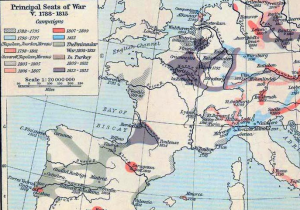On the morning of August 8, 1799, the peasant Pavel Spiridonov found a dead body on the road near his village. And he found not only “a dead male unknown body,” but close to it a saddled chestnut horse. What had happened, and who was this man?
Spiridonov was the local sotskii or “hundreder,” a peasant constable or guard, and he immediately turned to the zemskii sud, the district-level land court, for help. The district doctor and a district police officer by the name of Krivoshein were called in to consult. The police officer reported that they found no signs of violence on the body. The doctor gave more information about the state of the corpse: the man suffered from gangrene (антонов огонь) caused by “frequent consumption of spirits.” The doctor also reported that the death had been “sudden,” a fact that suggested that this chronic (over-)consumption of alcohol likely caused the man’s death. The exact mechanism of that death was still unclear. Was the man riding while drunk, and as a result fell off the horse, killing himself in the process? Or had he had some sort of attack caused by the gangrene or the drink, died, and then toppled off the horse’s back?
The horse wasn’t talking, but at least these reports suggested that there had been no foul play in the man’s death. As a result, the only task left was to identify the body. This, however, was no simple matter. Spiridonov, as the village constable, would have recognized any local man. This man was no local, nor was he recognized by anyone in the area.
The only thing that was immediately apparent was that “this unknown man was probably of moderate means (из людей посредственных).” The proof of this was his clothing: “a dark green flannel overcoat, a coat and waistcoat of coffee-colored cloth, white linen trousers and a fine cloth shirt.” No other personal items were found on the body.
This kind of detailed description of clothing was a normal part of identifying dead bodies. Once local newspapers (Gubernskie vedomosti) were established in many provinces at the end of the 1830s, they often featured notices of “found dead bodies” in need of identification. Descriptions of the bodies focused on where they had been found, and to a certain extent on their physical description—their facial features, height, and hair color. But perhaps because those physical descriptions were often made difficult due to decomposition, the notices most of all focused on the clothing and possessions of the dead bodies.
The report from the land court is unclear on how exactly identification was eventually made. Presumably the clothing helped, as did the fact that the man was only recently dead (though death in August was not ideal for identification purposes). Whatever the process was, it took some time. The body was discovered on August 8, and a first report was sent to the governor’s office on August 10. Only on August 22 did the head of the court, Kruze, present a report identifying the body: he was indeed no local, but instead a master cheese-maker named Tengli (or Tingeli or Tinguely), by birth Swiss, and before his death working for the palace administration of Gatchina, one of the many imperial residences outside St. Petersburg.
This identification solved the problem facing the lower court. But who this man was, how he got to be there, and what he left behind, remained questions for those who dealt with the aftermath of his death, still to be uncovered.
(RGIA f. 491, op. 1, d. 365, ll. 39-39ob)






